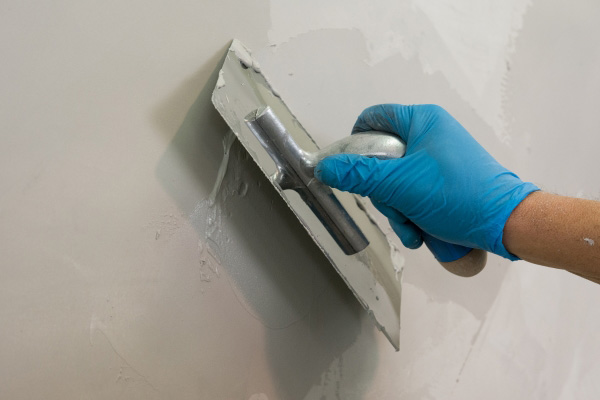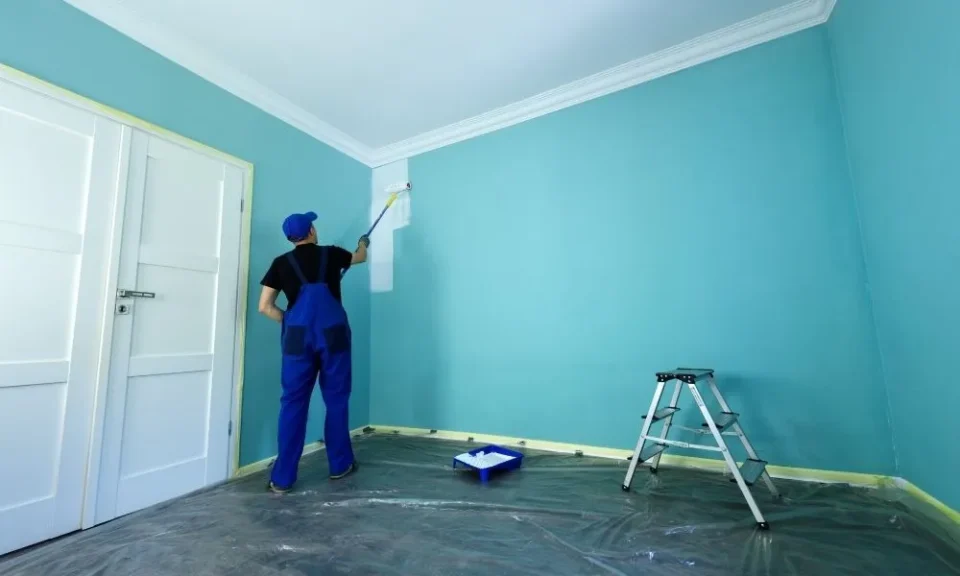Over time, paint doesn’t just fade—it undergoes a slow, chemical transformation. Exposure to air, fluctuating temperatures, and moisture gradually break down its structure. What was once a solid, protective layer becomes brittle, cracked, and susceptible to releasing harmful particles into the air. These changes are often unnoticed until the damage is significant, making it essential to understand how aging paint impacts your home environment.
As paint deteriorates, it can release microscopic particles that are easily inhaled. These unseen pollutants contain chemicals originally used in the paint’s formulation, many of which are known to be harmful to human health. While freshly applied paint releases volatile organic compounds (VOCs) in noticeable amounts, aging paint may continue to off-gas slowly over years, contributing to chronic indoor air pollution.
Your walls may look clean, but they could be emitting invisible toxins. As paint breaks down, tiny dust-like particles circulate in the air, carrying VOCs, lead (if the paint was produced before 1978), and other harmful substances. Without proper ventilation or mitigation measures, these pollutants accumulate in your living space, potentially leading to respiratory issues, headaches, and long-term health concerns.
The Chemical Composition of Paint and How It Changes Over Time
Paint consists of pigments, binders, solvents, and additives. Over time, the solvents evaporate, binders weaken, and pigments degrade. These changes not only affect the color and texture but also alter the chemical stability of the paint. As a result, older paint can become a persistent source of airborne toxins, even if it appears intact.
Ultraviolet (UV) rays from sunlight accelerate the breakdown of paint’s chemical bonds, leading to chalking and fading. High temperatures cause expansion and contraction, contributing to cracks and peeling. Moisture seeps into these fissures, promoting mold and mildew growth. Combined, these factors significantly speed up the deterioration process and the release of airborne pollutants.
Paint deteriorates in two primary ways: physical breakdown and off-gassing. Physical breakdown occurs as the paint cracks, peels, or turns into dust. Off-gassing, on the other hand, happens when chemical compounds, particularly VOCs and formaldehyde, continue to emit into the air long after the paint has dried. Both processes contribute to indoor air pollution, but off-gassing is especially insidious because it happens without visible signs of damage.
Common Toxins Released by Aging Paint
As paint ages, it doesn’t just lose its aesthetic appeal—it can become a source of hidden environmental hazards. Over time, various chemical compounds embedded in paint formulations begin to break down, releasing potentially harmful substances into the air. These toxins may not be immediately noticeable, but their cumulative effects on indoor air quality and human health can be significant. Understanding what lurks within deteriorating paint layers is crucial for making informed decisions about home maintenance and renovation.
- Volatile Organic Compounds (VOCs). VOCs are carbon-based chemicals that evaporate at room temperature. Many traditional paints contain high levels of VOCs, which can continue to seep into the air for years. Prolonged exposure has been linked to respiratory problems, dizziness, and even neurological issues.
- Lead-Based Paint. Homes built before 1978 may still contain lead-based paint, which poses severe health risks, especially to children and pregnant women. Lead dust, created as paint deteriorates, can be inhaled or ingested, leading to cognitive impairments, developmental issues, and other serious health problems.
- Mold and Mildew Growth. When paint cracks and peels, moisture seeps in, creating an ideal environment for mold and mildew. These fungal growths release spores into the air, triggering allergies, asthma attacks, and other respiratory ailments.
- Formaldehyde. Some older paints contain formaldehyde, a known carcinogen. As the paint ages, it continues to release small amounts of this harmful chemical into your home, increasing the risk of long-term health effects.
- Microplastics and Particulate Matter. Modern paints often contain plastic polymers that, when degraded, release microplastics into the air. These tiny particles can be inhaled, potentially leading to lung inflammation and other health complications.

Health Risks Associated with Aging Paint Pollutants
Aging paint isn’t just an aesthetic concern—it poses real risks to your health. As it deteriorates, it can release harmful chemicals and toxins into the air, potentially affecting the well-being of everyone in your home. The risks range from minor irritations like headaches and skin reactions to severe long-term effects, including respiratory problems and neurological issues. Understanding these risks is the first step in mitigating the dangers associated with aging paint.
- Respiratory Issues. Breathing in VOCs and airborne particles from deteriorating paint can lead to chronic respiratory problems, including asthma, bronchitis, and reduced lung function.
- Allergic Reactions and Skin Irritations. Some individuals may experience allergic reactions such as skin rashes, eye irritation, or headaches due to exposure to aging paint fumes.
- Neurological and Developmental Concerns. Long-term exposure to lead and VOCs has been associated with cognitive impairments, memory problems, and developmental delays in children.
Vulnerable populations, including children, pregnant women, and the elderly, face heightened risks from exposure to deteriorating paint. Young children are particularly susceptible due to their developing brains and tendency to ingest dust from hand-to-mouth contact.
Detecting and Identifying Problematic Paint in Your Home
Look for peeling, cracking, or chalking surfaces, which indicate the breakdown of paint. Fading and discoloration can also be early signs of chemical degradation. If the paint is old and in a high-moisture area, mold growth may be a concern.
Home testing kits can help identify harmful substances in aging paint. Lead test swabs can detect the presence of lead-based paint, while VOC meters measure airborne toxins. These tools provide an initial assessment before seeking professional evaluation.
If your home was built before 1978 or you suspect high levels of toxic compounds, hiring a professional for paint analysis is recommended. Certified inspectors use advanced tools to assess the risks and provide guidance on safe remediation.
Safe Removal and Replacement of Aging Paint
Removing old paint through sanding or scraping can release harmful dust and particles into the air. Without proper containment and protective gear, this process can pose serious health risks.
Use wet sanding or chemical stripping techniques to minimize airborne particles. HEPA-filtered vacuums and containment barriers help control pollutant spread during removal. Wear respiratory masks, gloves, and protective clothing. Ensure adequate ventilation by using exhaust fans and opening windows to reduce airborne contaminants.
Choosing Safer, Healthier Paint Alternatives
Choose paints labeled as “low-VOC” or “zero-VOC” to minimize indoor air pollution. Natural paints made from clay, milk protein, or plant-based oils offer non-toxic alternatives. Eco-friendly paints reduce exposure to harmful chemicals and are made with sustainable ingredients, making them safer for both health and the environment.
How to Properly Seal and Maintain New Paint for Long-Lasting Protection
Ensuring your newly painted surfaces remain in pristine condition requires more than just choosing the right paint—it demands proper sealing and maintenance. A high-quality sealant provides a protective barrier that shields paint from moisture, UV exposure, and everyday wear and tear. Regular maintenance, such as gentle cleaning and periodic touch-ups, helps preserve the integrity of the paint and prevents premature degradation. Additionally, controlling indoor humidity levels and avoiding harsh cleaning chemicals can extend the lifespan of the paint, ensuring your walls remain vibrant and toxin-free for years to come. Regular cleaning and maintenance prevent premature degradation. Applying a protective sealant can extend the lifespan of new paint while reducing emissions over time.

